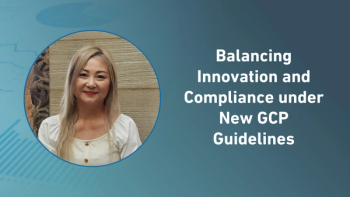
Tailored Patient Involvement in Clinical Trials
The approach of the Cancer Research UK Centre for Drug Development.
At the Cancer Research UK (CRUK) Centre for Drug Development (CDD), no two trials are the same. It’s important not to approach patient involvement from a “one size fits all” mindset. Here, we share our experience of tailoring patient involvement according to the design and needs of each individual trial.
Including and, more importantly, valuing contributions from people affected by cancer can facilitate recruitment to a trial and improve the information we give to patients.Including people affected by cancer in the team supports the development of trials and medicines that are then better tailored to patients’ needs. At the CDD, we keep patient involvement at the heart of trial planning, and we value continued relationships with patient representatives.
Multiple focus groups and recruiting patient representatives: Our first platform trial
When sponsoring our first platform trial, we wanted to ensure that the complex nature of the trial’s design did not compromise patient experience. It was important for us to understand how patients would perceive certain aspects of the trial, such as the sharing of genomic data (and the study of genetic mutations in general), to ensure patients considering the trial feel fully informed.
From the beginning, we involved people affected by cancer - their feedback shaped and underpinned the trial proposal itself. We drew from both internal and external patient involvement panels and networks, to recruit four diverse focus groups: adults affected by rare cancers; parents of children affected by cancer; young adults affected by cancer; and people from minority ethnic backgrounds affected by cancer.
Particular focus was placed on patients’ journey throughout the trial. Some feedback was common across the focus groups, such as the potential value of an animation explaining the trial. The groups suggested how it could be made inclusive and accessible and their ideas were used during the creation of the animation, which will be available on the trial website.
Engaging with a variety of focus groups ensured representation from a diverse range of potentially eligible patients, and guaranteed a well-rounded discussion based on individual needs and experiences. Two patient representatives agreed to provide ongoing input to the trial management team and so their valuable insight will continue over the course of the trial.
Shaping the trial schedule and patient facing materials: A randomized vaccine trial
This trial, eligible only to those recently diagnosed with cancer, gives cancer vaccines alongside standard-of-care treatment. Due to this, we wanted to consider how to make trial information manageable for these patients specifically. These patients would most likely be working whilst being treated, so we wanted to ensure trial visits were suitable for them and their personal commitments.
After seeking initial feedback through surveys, we engaged a focus group to help develop an appropriate trial visit schedule. Thanks to the insight we gained, we were prompted to create new materials, including a pre-consent leaflet providing bite-sized information, and are developing an animation to support the Informed Consent Document (ICD). These suggestions will ensure that information is manageable for patients considering participation in this trial soon after receiving a cancer diagnosis. When updating documents, we again consulted with this group and their feedback was valuable.
Making informed consent clearer: A dose escalation trial
For all CDD trials we request feedback in the form of a questionnaire from patients and carers who take part. This may lead to improvements in the ICD and changes to our template documents.
Even if our trial seems straightforward, seeking input from people affected by cancer is important. For a dose escalation trial, we conducted an email consultation with CRUK’s Cancer Insights Panel (a group of people with experience of cancer) on the trial’s ICD. Feedback led us to improve the wording around side-effects, payments and expenses and the Research Ethics Committee stated they were impressed with quality of the documentation and the level of patient involvement.
Dynamic patient involvement
To deliver patient-focused trials, we adapt our approach to patient involvement based upon the needs of each trial and of the potential patients. We consider aspects of the trial that would benefit from patient insight and the different approaches that could be taken. Patient involvement continues throughout the duration of the trial by maintaining contact with focus groups and/or working alongside patient representatives. The examples we’ve shared here presented different challenges, and so we adapted our patient involvement strategy accordingly.
Dynamic patient involvement is key to a patient-focused trial and should be widely utilized. Our patient representatives make valuable contributions to trial planning and patient facing materials, often providing new insights, and flagging aspects that we have not considered. As a result, trial participants are better informed because we’ve generated new resources, and we hope that their lives and careers are less disrupted because we have listened to them.
Julia Oddy, Clinical Study Coordinator, Bethany Newell, Clinical Study Coordinator, and Kathleen Killen, Medical Writer; all with the Cancer Research UK Centre for Drug Development
Newsletter
Stay current in clinical research with Applied Clinical Trials, providing expert insights, regulatory updates, and practical strategies for successful clinical trial design and execution.




